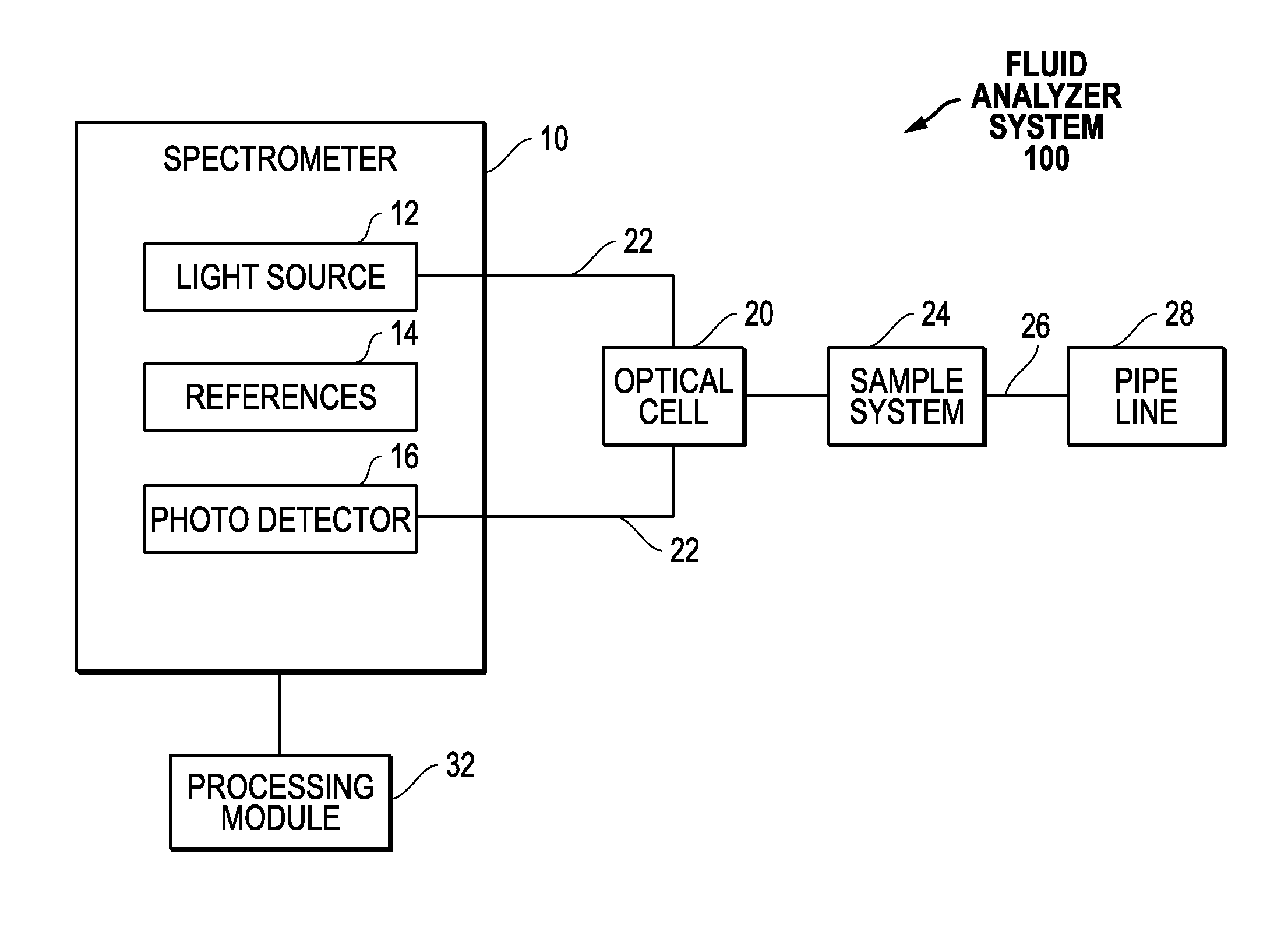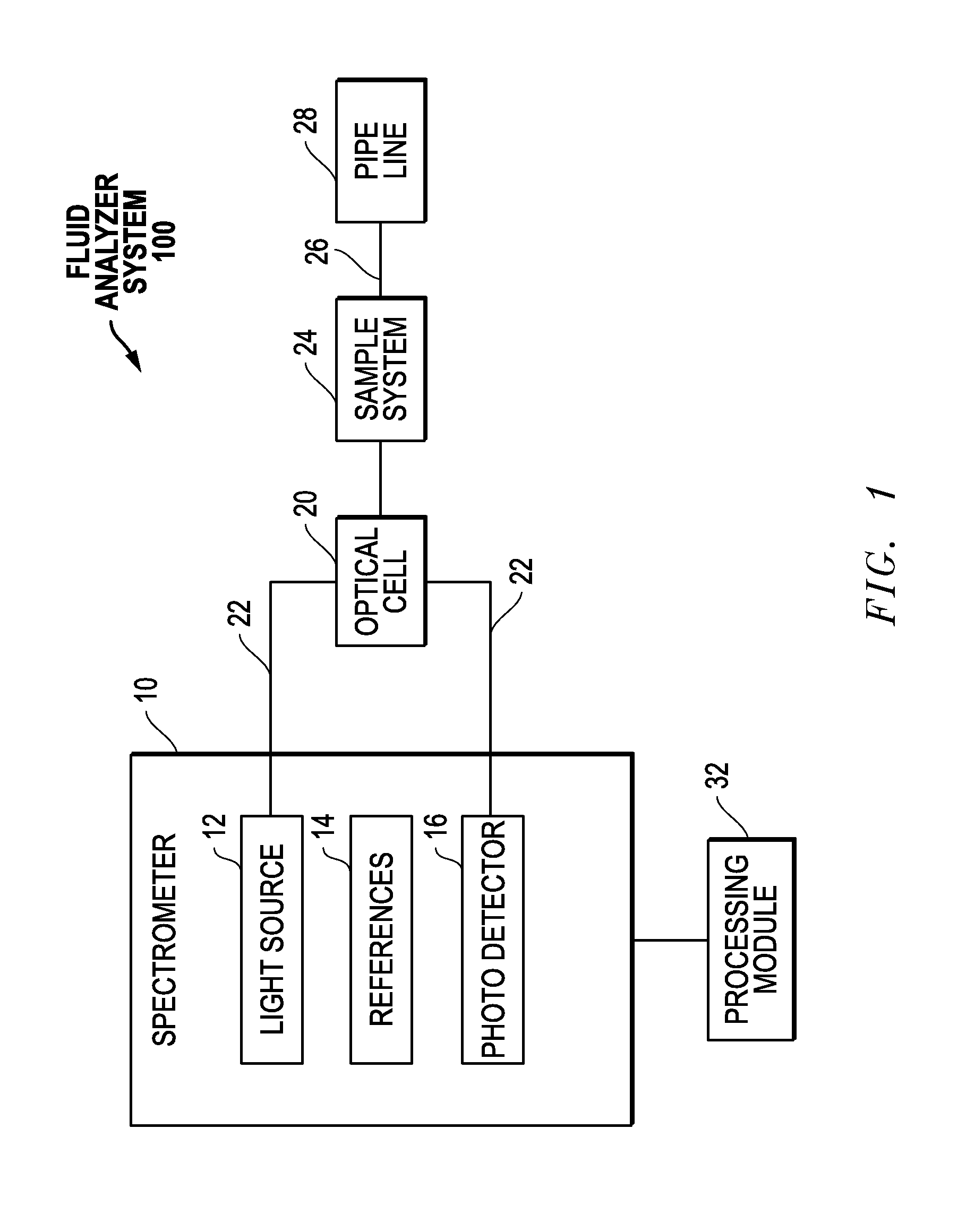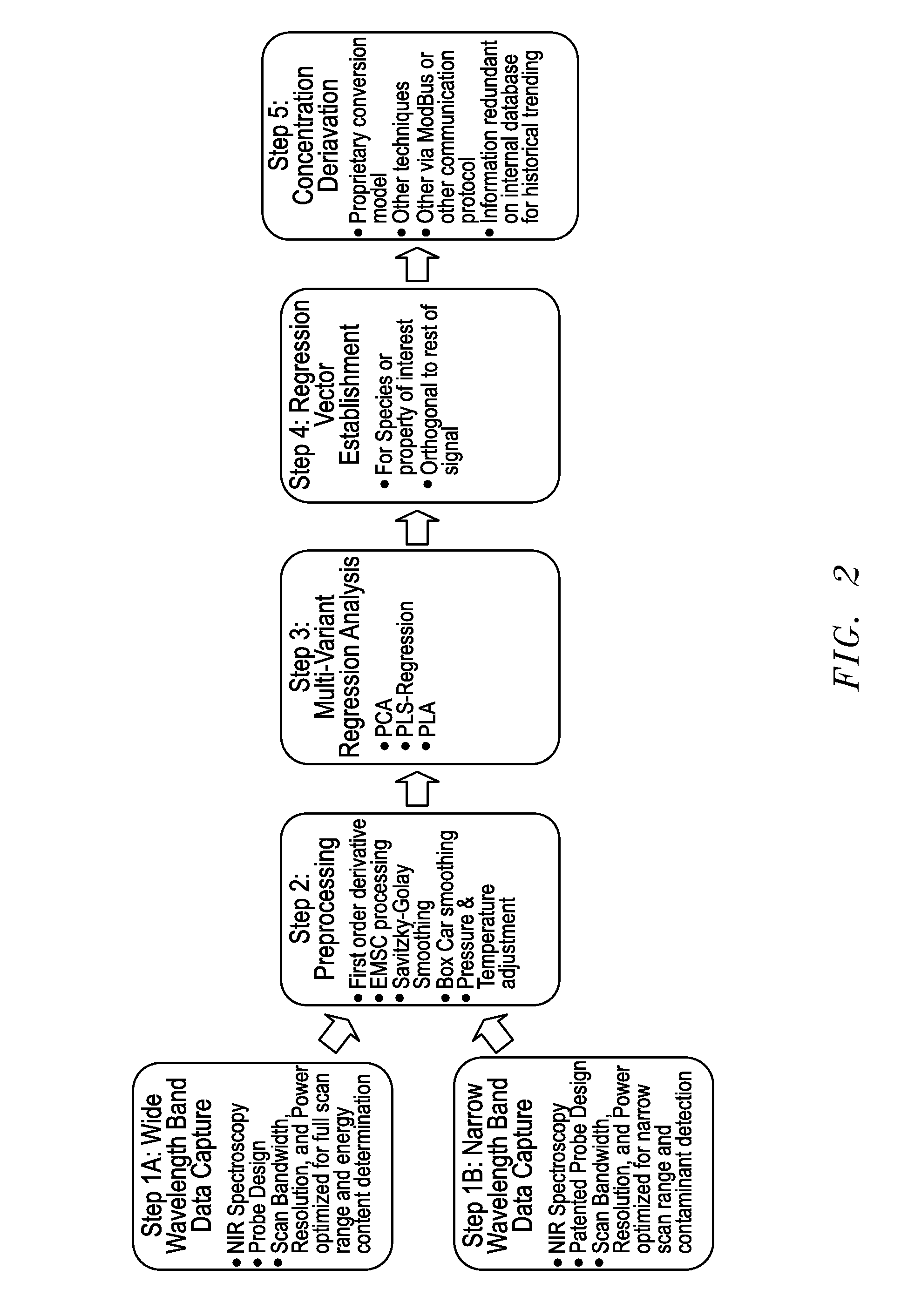Method and system for determining energy content and detecting contaminants in a fluid stream
a technology of energy content and fluid stream, applied in the field of real-time, in-situ monitoring of fluids, can solve the problems of sulfide component being extremely toxic and irritating gas, eye irritation, headaches at low concentration, unconsciousness or death, etc., and achieves high resolution and power level.
- Summary
- Abstract
- Description
- Claims
- Application Information
AI Technical Summary
Benefits of technology
Problems solved by technology
Method used
Image
Examples
Embodiment Construction
[0019]The present invention is directed to improved methods and systems for, among other things, detecting contaminants in a fluid stream. The configuration and use of the presently preferred embodiments are discussed in detail below. It should be appreciated, however, that the present invention provides many applicable inventive concepts that can be embodied in a wide variety of contexts other than determination of energy content and detection of contaminants in a fluid stream. Accordingly, the specific embodiments discussed are merely illustrative of specific ways to make and use the invention, and do not limit the scope of the invention. In addition, the following terms shall have the associated meaning when used herein:
[0020]“fluid infrastructure” means any infrastructure used in connection with the collection, processing, storage, transmission or distribution of a fluid including, without limitation, if the fluid is a hydrocarbon, any infrastructure between the wellhead and the...
PUM
| Property | Measurement | Unit |
|---|---|---|
| wavelength range | aaaaa | aaaaa |
| wavelength range | aaaaa | aaaaa |
| wavelength range | aaaaa | aaaaa |
Abstract
Description
Claims
Application Information
 Login to View More
Login to View More - R&D
- Intellectual Property
- Life Sciences
- Materials
- Tech Scout
- Unparalleled Data Quality
- Higher Quality Content
- 60% Fewer Hallucinations
Browse by: Latest US Patents, China's latest patents, Technical Efficacy Thesaurus, Application Domain, Technology Topic, Popular Technical Reports.
© 2025 PatSnap. All rights reserved.Legal|Privacy policy|Modern Slavery Act Transparency Statement|Sitemap|About US| Contact US: help@patsnap.com



